Other

“Researchers from Penn have developed a scalable microfluidics platform that could transform RNA therapeutic and vaccine production. Following the global COVID-19 pandemic, the development and rapid deployment of mRNA vaccines highlighted the critical role of lipid nanoparticles (LNPs) in …
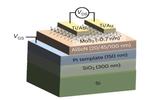
“The Big Data revolution has strained the capabilities of state-of-the-art electronic hardware, challenging engineers to rethink almost every aspect of the microchip. With ever more enormous data sets to store, search and analyze at increasing levels of complexity, these devices …

“Photonic chips have revolutionized data-heavy technologies. On their own or in concert with traditional electronic circuits, these laser-powered devices send and process information at the speed of light, making them a promising solution for artificial intelligence’s data-hungry applications. In …
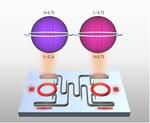
“Researchers at Penn Engineering have created a chip that outstrips the security and robustness of existing quantum communications hardware. Their technology communicates in “qudits,” doubling the quantum information space of any previous on-chip laser. Liang Feng, Professor in the Departments …
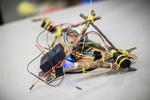
“Devin Carroll, a doctoral candidate in the School of Engineering and Applied Sciences, is designing a modular robot called StickBot, which may be adapted for rehabilitation use in global public health settings. In late summer, just as the leaves were …

“Artificial intelligence (AI) plays an important role in many systems, from predictive text to medical diagnoses. Inspired by the human brain, many AI systems are implemented based on artificial neural networks, where electrical equivalents of biological neurons are interconnected, trained …
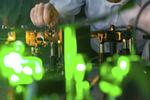
“Using a novel technique developed at Penn, researchers gained new insights into the properties of a proposed excitonic insulator known as Ta2NiSe5, with implications for future quantum devices. Anew study describes previously unexpected properties in a complex quantum material known …
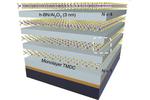
“Solar panels, cameras, biosensors and fiber optics are technologies that rely on photodetectors, or sensors that convert light into electricity. Photodetectors are becoming more efficient and affordable, with their component semiconductor chips decreasing in size. However, this miniaturization is pushing …

“Natural wood remains a ubiquitous building material because of its high strength-to-density ratio; trees are strong enough to grow hundreds of feet tall but remain light enough to float down a river after being logged. For the past three years …

“A collaborative team of materials scientists and theoretical chemists provide hybrid perovskite nanoparticles that are high-efficiency light emitters by using a comprehensive defect-suppression strategy. New research details how a class of electroluminescent materials, key components of devices such as LED …

